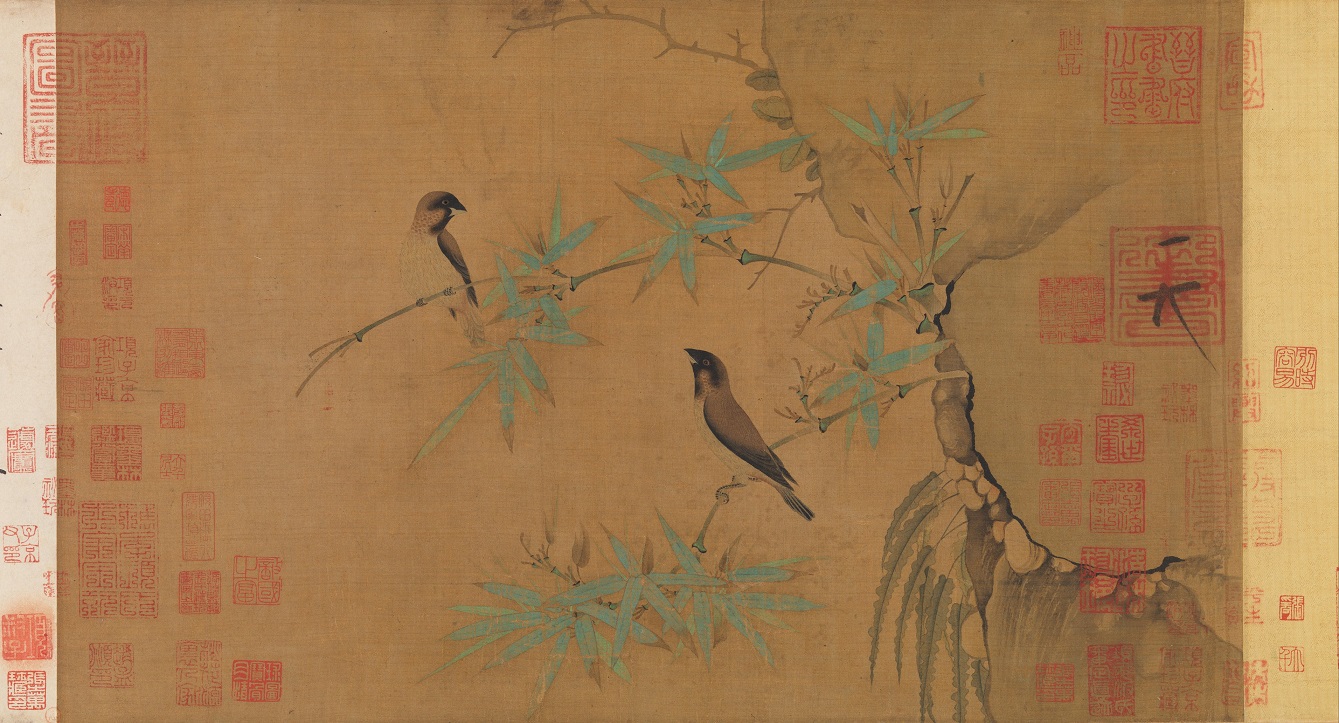
By Staff Middle Land
By Maxwell Hearn
The Chinese way of appreciating a painting is often expressed by the words du hua, “to read a painting.” How does one do that?
Consider Night-Shining White by Han Gan (1977.78), an image of a horse. Originally little more than a foot square, it is now mounted as a handscroll that is twenty feet long as a result of the myriad inscriptions and seals (marks of ownership) that have been added over the centuries, some directly on the painted surface, so that the horse is all but overwhelmed by this enthusiastic display of appreciation. Miraculously, the animal’s energy shines through. It does so because the artist has managed to distill his observations of both living horses and earlier depictions to create an image that embodies the vitality and form of an iconic “dragon steed.” He has achieved this with the most economical of means: brush and ink on paper.
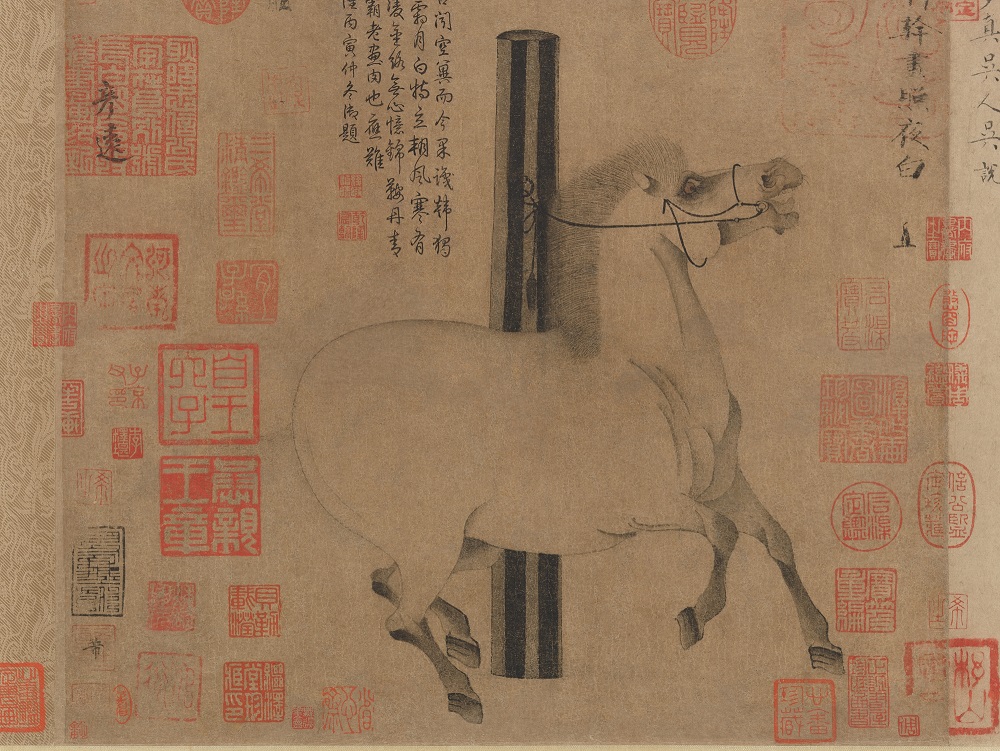
This is the aim of the traditional Chinese painter: to capture not only the outer appearance of a subject but its inner essence as well—its energy, life force, spirit. To accomplish his goal, the Chinese painter more often than not rejected the use of color. Like the photographer who prefers to work in black and white, the Chinese artist regarded color as distraction. He also rejected the changeable qualities of light and shadow as a means of modeling, along with opaque pigments to conceal mistakes. Instead, he relied on line—the indelible mark of the inked brush.
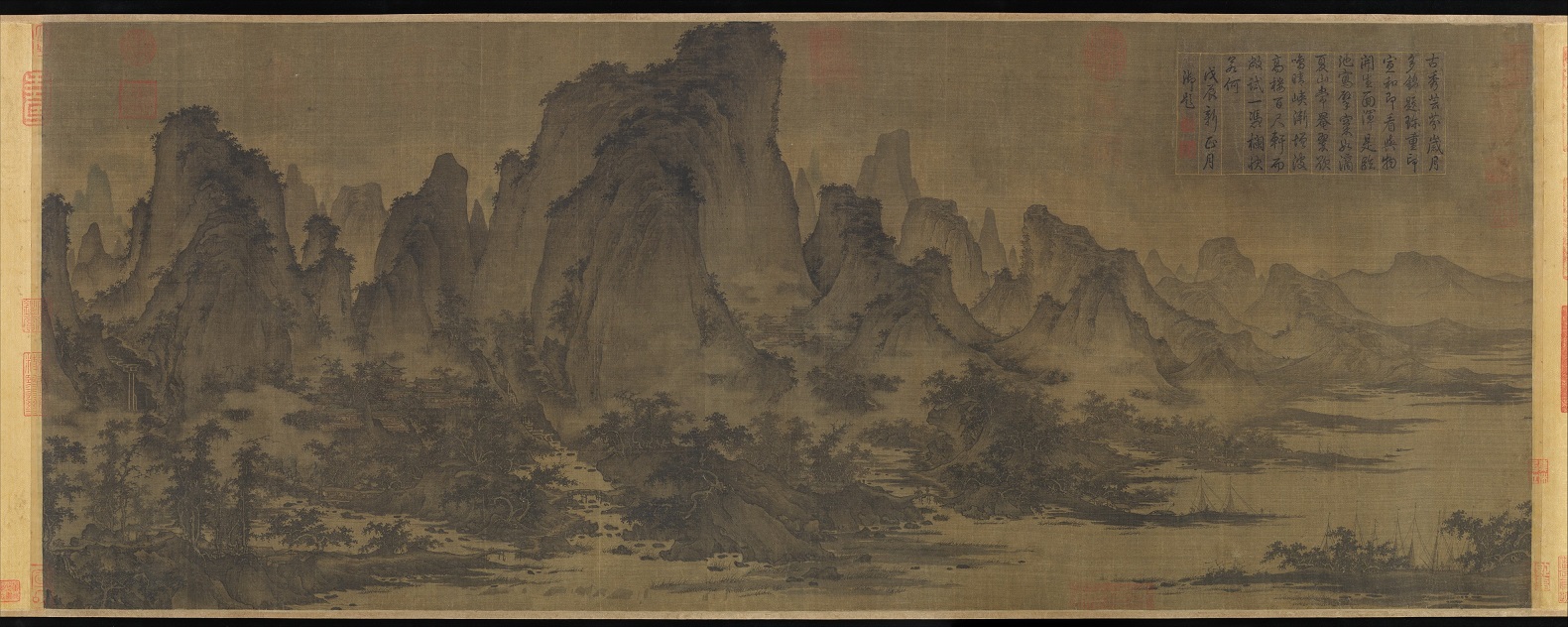
The discipline that this kind of mastery requires derives from the practice of calligraphy. Traditionally, every literate person in China learned as a child to write by copying the standard forms of Chinese ideographs. The student was gradually exposed to different stylistic interpretations of these characters. He copied the great calligraphers’ manuscripts, which were often preserved on carved stones so that rubbings could be made. He was also exposed to the way in which the forms of the ideographs had evolved: their earliest appearance on bronzes, stones, and bones about 1300 B.C. (known today as “seal” script, after its use on the red seals of ownership); their gradual regularization, culminating with the bureaucratic proliferation of documents by government clerks during the second century A.D. (“clerical” script); their artful simplification into abbreviated forms (“running” and “cursive” scripts); and the fusion of these form-types into “standard” script, in which the individually articulated brushstrokes that make up each character are integrated into a dynamically balanced whole. Over time, the practitioner evolved his own personal style, one that was a distillation and reinterpretation of earlier models.
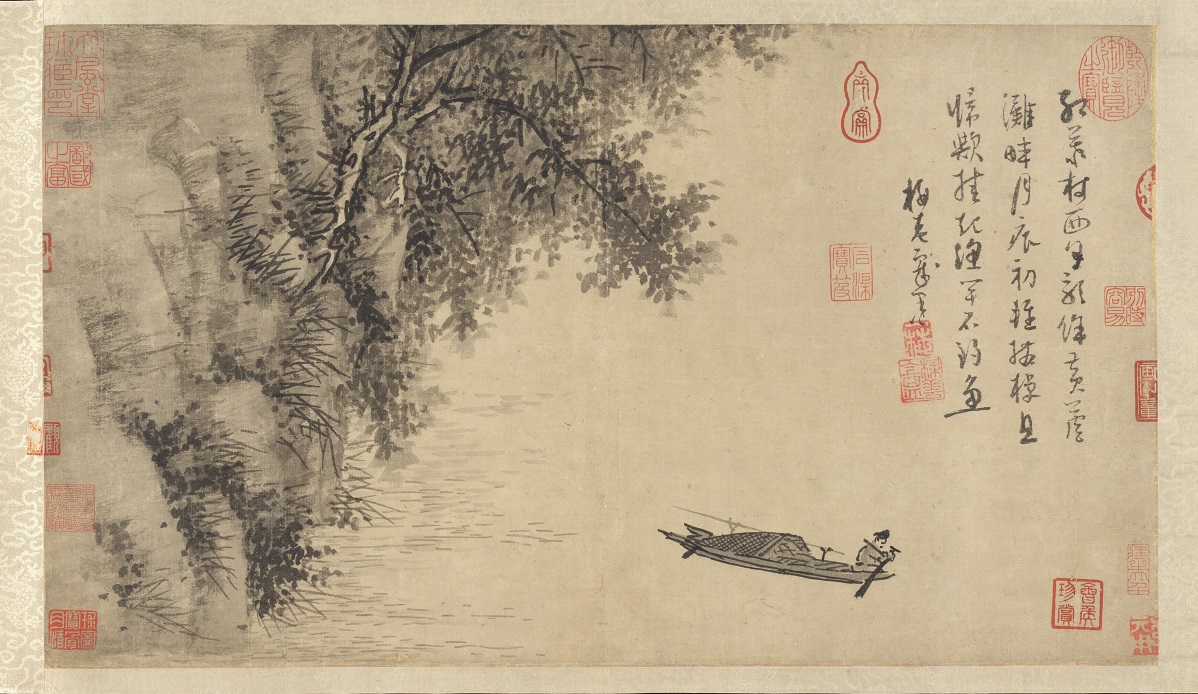
The practice of calligraphy became high art with the innovations of Wang Xizhi in the fourth century. By the eleventh century, a good hand was one criterion—together with a command of history and literary style—that determined who was recruited into the government through civil service examinations. Those who succeeded came to regard themselves as a new kind of elite, a meritocracy of “scholar-officials” responsible for maintaining the moral and aesthetic standards established by the political and cultural paragons of the past. It was their command of history and its precedents that enabled them to influence current events. It was their interpretations of the past that established the strictures by which an emperor might be constrained. And it was their poetry, diaries, and commentaries that constituted the accounts by which a ruler would one day be judged.

These were the men who covered Night-Shining White with inscriptions and seals. Their knowledge of art enabled them to determine that the image was a portrait of an imperial stallion by a master of the eighth century. They recognized that the horse was meant as an emblem of China’s military strength and, by extension, as a symbol of China itself. And they understood the poignancy of the image. Night-Shining White was the favorite steed of an emperor who led his dynasty to the height of its glory but who, tethered by his infatuation with a concubine, neglected his charge and eventually lost his throne.
The emperor’s failure to put his stallion to good use may be understood as a metaphor for a ruler’s failure to properly value his officials. This is undoubtedly how the retired scholar-official Zhao Mengfu intended his image of a stallion, painted 600 years later (1988.135), to be interpreted. Expertise in judging fine horses had long been a metaphor for the ability to recognize men of talent. Zhao’s portrait of the horse and groom may be read as an admonition to those in power to heed the abilities of those in their command and to conscientiously employ their talents in the governance of their people.
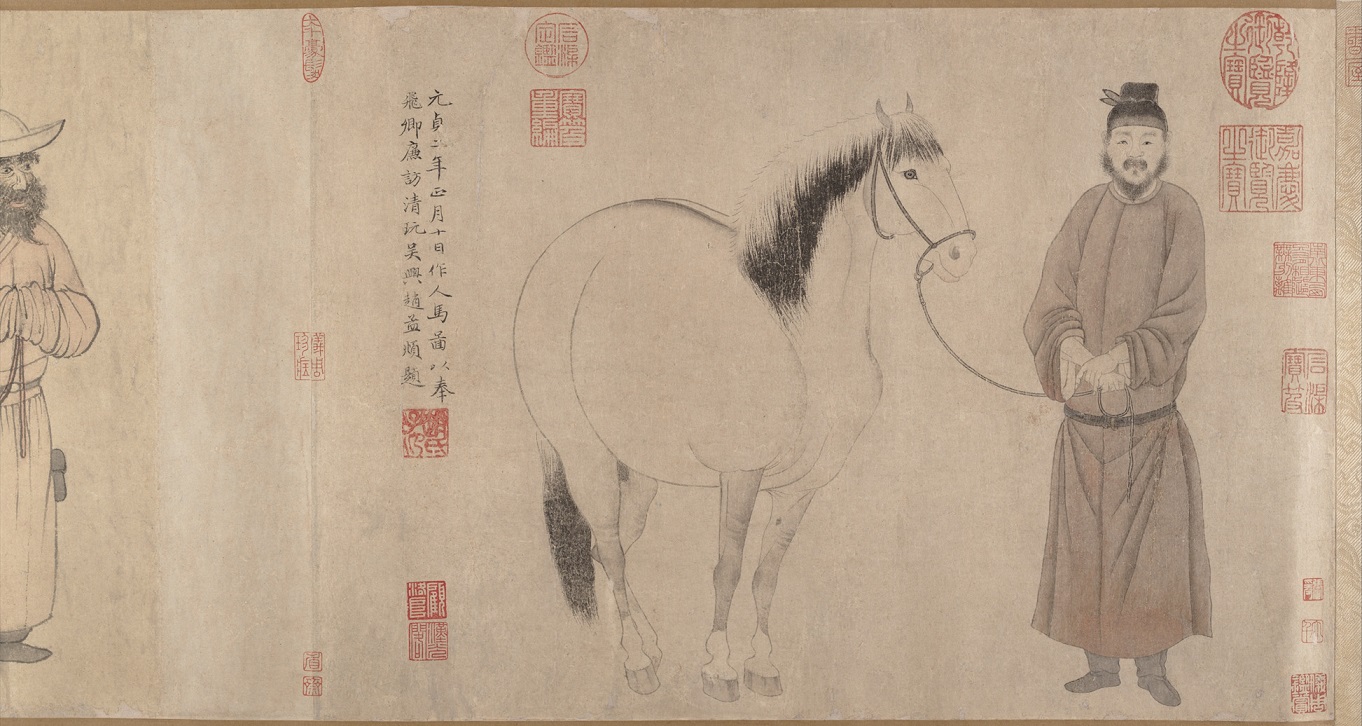
When an emperor neglected the advice of his officials, was unjust or immoral, scholar-officials not infrequently resigned from government and chose to live in retirement. Such an action had long been understood as a withdrawal of support, a kind of silent protest in circumstances deemed intolerable. Times of dynastic change were especially fraught, and loyalists of a fallen dynasty usually refused service under a new regime (1973.120.6; 2014.721). Scholar-officials were at times also forced out of office, banished as a result of factionalism among those in power. In such cases, the alienated individual might turn to art to express his beliefs.
But even when concealed in symbolic language, beliefs could incite reprisals: the eleventh-century official Su Shi, for example, was nearly put to death for writing poems that were deemed seditious. As a result, these men honed their skills in the art of indirection. In their hands, the transcription of a historical text could be transformed into a strident protest against factional politics, illustrations to a Confucian classic became a stinging indictment of sanctimonious or irresponsible behavior (1996.479). Because of their highly personal nature, such works were almost always dedicated to a close friend or kindred spirit and would have been viewed only by a select circle of like-minded individuals. But since these men acted as both policy makers and the moral conscience of society, their art was highly influential.
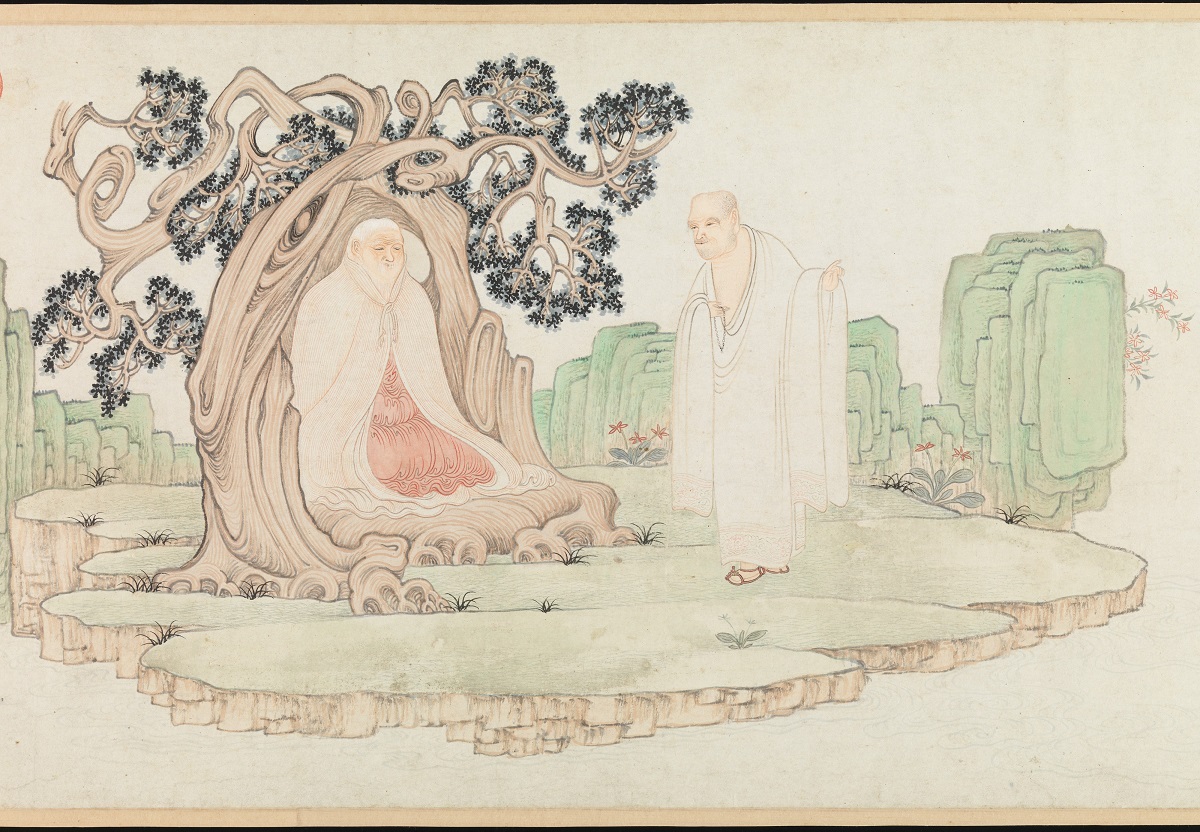
Scholar-official painters most often worked in ink on paper and chose subjects—bamboo, old trees, rocks—that could be drawn using the same kind of disciplined brush skills required for calligraphy. This immediately distinguished their art from the colorful, illusionistic style of painting preferred by court artists and professionals. Proud of their status as amateurs, they created a new, distinctly personal form of painting in which expressive calligraphic brush lines were the chief means employed to animate their subjects. Another distinguishing feature of what came to be known as scholar-amateur painting is its learned references to the past. The choice of a particular antique style immediately linked a work to the personality and ideals of an earlier painter or calligrapher. Style became a language by which to convey one’s beliefs.
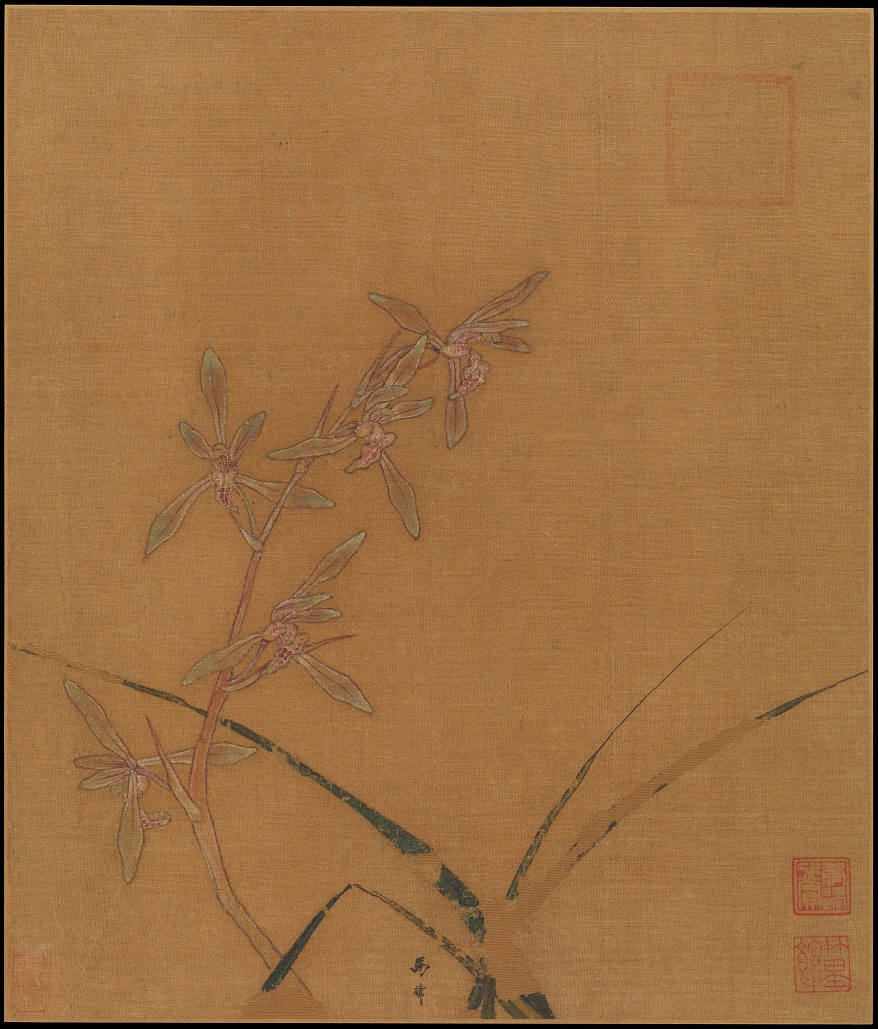
Zhao Mengfu epitomized the new artistic paradigm of the scholar-amateur. A scholar-official by training, he was also a brilliant calligrapher (1989.363.30) who applied his skill with a brush to painting. Intent on distinguishing his kind of scholar-painting from the work of professional craftsmen, Zhao defined his art by using the verb “to write” rather than “to paint.” In so doing, he underscored not only its basis in calligraphy but also the fact that painting was not merely about representation—a point he emphasized in his Twin Pines, Level Distance (1973.120.5) by adding his inscription directly over the landscape. Zhao was a consummate scholar, and his choice of subject and painting style was carefully considered. Because the pine tree remains green through the winter, it is a symbol of survival. Because its outstretched boughs offer protection to the lesser trees of the forest, it is an emblem of the princely gentleman. For recluse artists of the tenth century, the pine had signified the moral character of the virtuous man. Zhao, having recently withdrawn from government service under the Mongols, must have chosen to “write” pines in a tenth-century style as a way to express his innermost feelings to a friend. His painting may be read as a double portrait—a depiction of himself and also of the person to whom it was dedicated.
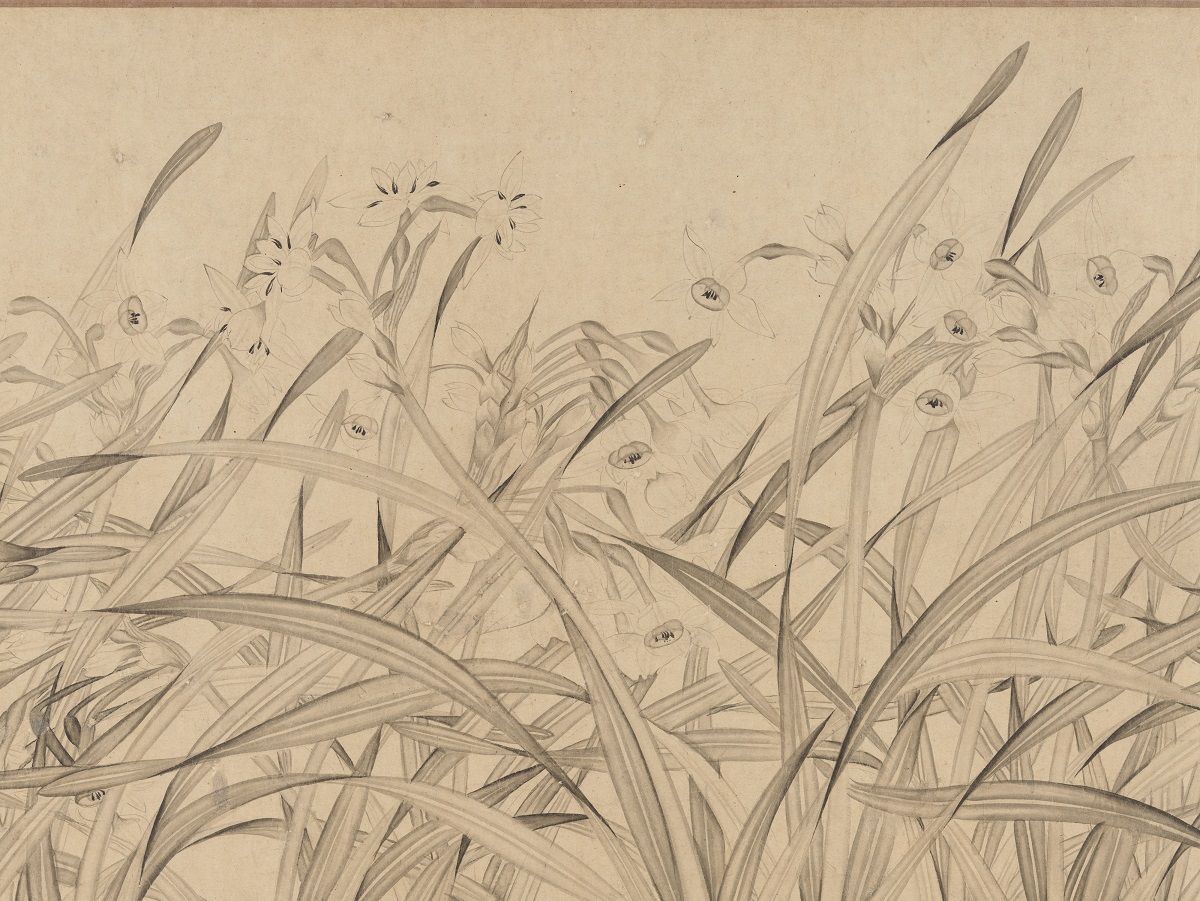
Since scholar-artists employed symbolism, style, and calligraphic brushwork to express their beliefs and feelings, they left the craft of formal portraiture to professional artisans. Such craftsmen might be skilled in capturing an individual’s likeness (59.49.1), but they could never hope to convey the deeper aspects of a man’s character.
Integrating calligraphy, poetry, and painting, scholar-artists for the first time combined the “three perfections” in a single work (1989.363.33). In such paintings, poetic and pictorial imagery and energized calligraphic lines work in tandem to express the mind and emotions of the artist (1989.363.39). Once poetic inscriptions had become an integral part of a composition, the recipient of the painting or a later appreciator would often add an inscription as his own “response.” Thus, a painting was not finalized when an artist set down his brush, but it would continue to evolve as later owners and admirers appended their own inscriptions or seals. Most such inscriptions take the form of colophons placed on the borders of a painting or on the endpapers of a handscroll or album; others might be added directly on to the painting. In this way, Night-Shining White (1977.78) was embellished with a record of its transmission that spans more than a thousand years.
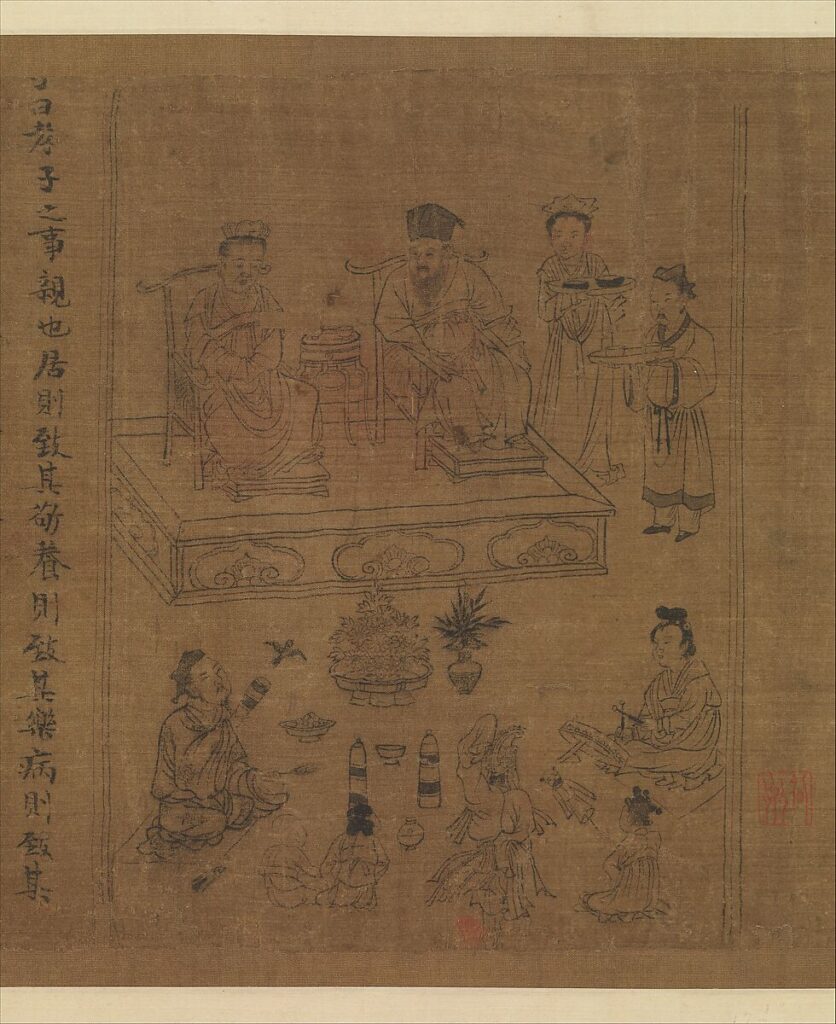
As the arbiters of history and aesthetic values, scholars had an immense impact on taste. Even emperors came to embrace scholarly ideals. Although some became talented calligraphers and painters (1981.278), more often they recruited artists whose images magnified the virtues of their rule. Both the court professional and the scholar-amateur made use of symbolism, but often to very different ends. While Zhao Mengfu’s pines may reflect the artist’s determination to preserve his political integrity (1973.120.5), a landscape painting by a court painter might be read as the celebration of a well-ordered empire (1973.120.1). A scholar-painting of narcissus reflects the artist’s identification with the pure fragrance of the flower, a symbol of loyalty (1973.120.4), while a court painter’s lush depiction of orchids was probably intended to evoke the sensuous pleasures of the harem (1973.120.10). The key distinction between scholar-amateur and professional painting is in the realization of the image: through calligraphically abbreviated monochrome drawing on paper or through the highly illusionistic use of mineral pigments on silk.
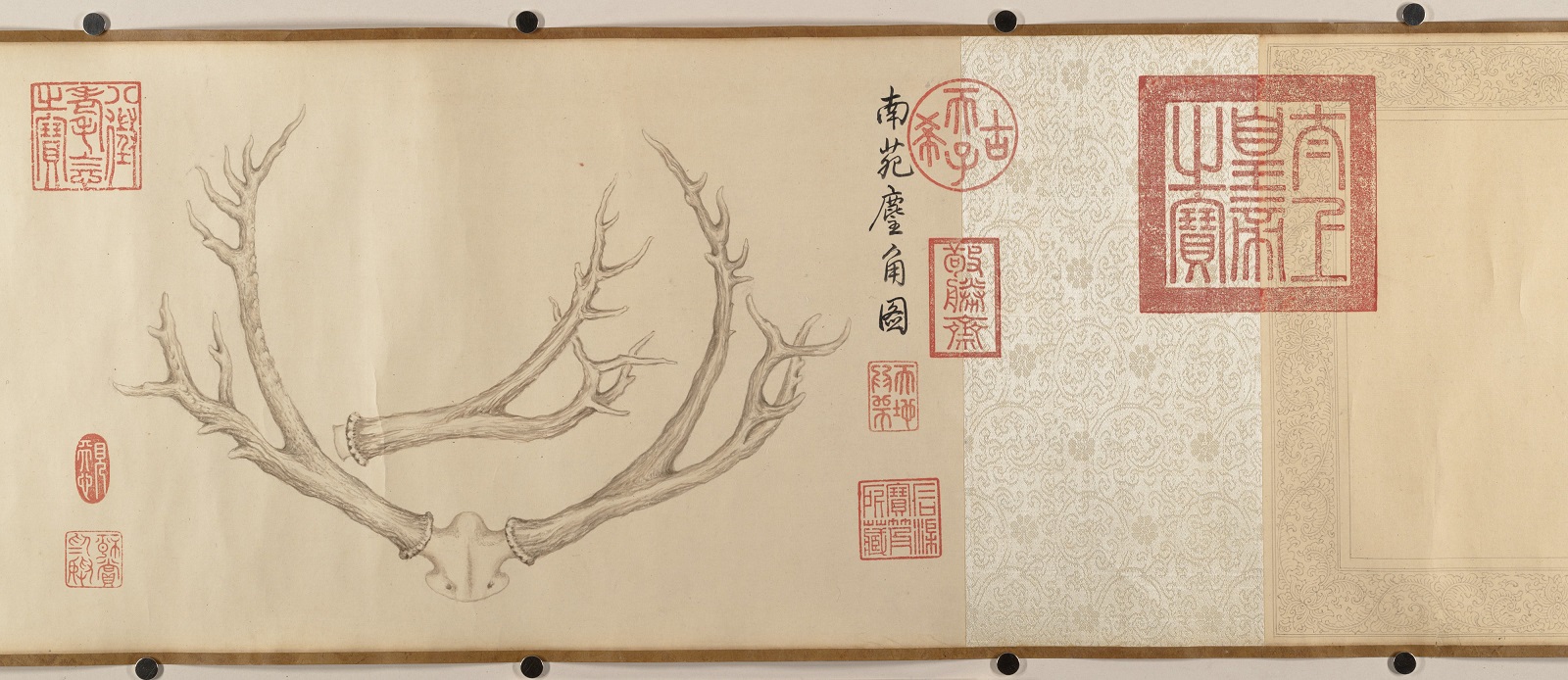
Amateur and professional alike shared a reverence for the past. Artists would manipulate antique styles (1973.120.6) and reinterpret ancient subjects (1988.135) to lend historical resonance to their work. But the weight of past precedents was also a heavy burden that could make painters acutely self-conscious. Sometimes their solutions were eccentric and challenged the viewer’s ability to judge them by what had preceded them (1986.266.4). At other times, a knowledge of past models made them keenly aware of the illusionistic power of art, the capacity to mimic reality (2005.112a–l) as well as to distort it (1989.363.14).
To “read” a Chinese painting is to enter into a dialogue with the past; the act of unrolling a scroll or leafing through an album provides a further, physical connection to the work. An intimate experience, it is one that has been shared and repeated over the centuries. And it is through such readings, enjoyed alone or in the company of friends, that meaning is gradually revealed.
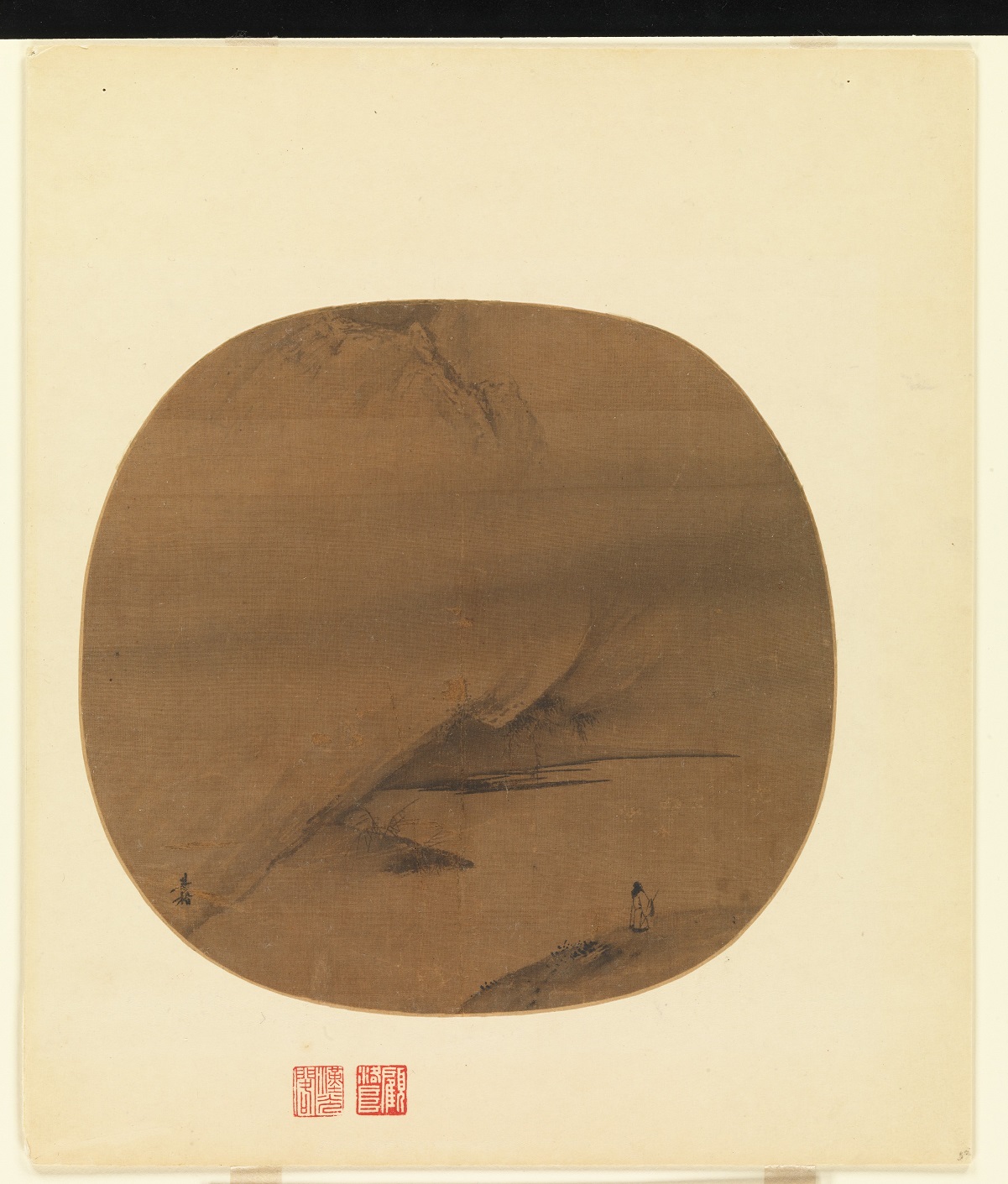
Citation
Hearn, Maxwell. “Chinese Painting.” In Heilbrunn Timeline of Art History. New York: The Metropolitan Museum of Art, 2000–. http://www.metmuseum.org/toah/hd/chin/hd_chin.htm (June 2008)
Original article: The Metropolitan Museum of Art









Cancel anytime


Using our website
You may use the The Middle Land website subject to the Terms and Conditions set out on this page. Visit this page regularly to check the latest Terms and Conditions. Access and use of this site constitutes your acceptance of the Terms and Conditions in-force at the time of use.
Intellectual property
Names, images and logos displayed on this site that identify The Middle Land are the intellectual property of New San Cai Inc. Copying any of this material is not permitted without prior written approval from the owner of the relevant intellectual property rights.
Requests for such approval should be directed to the competition committee.
Please provide details of your intended use of the relevant material and include your contact details including name, address, telephone number, fax number and email.
Linking policy
You do not have to ask permission to link directly to pages hosted on this website. However, we do not permit our pages to be loaded directly into frames on your website. Our pages must load into the user’s entire window.
The Middle Land is not responsible for the contents or reliability of any site to which it is hyperlinked and does not necessarily endorse the views expressed within them. Linking to or from this site should not be taken as endorsement of any kind. We cannot guarantee that these links will work all the time and have no control over the availability of the linked pages.
Submissions
All information, data, text, graphics or any other materials whatsoever uploaded or transmitted by you is your sole responsibility. This means that you are entirely responsible for all content you upload, post, email or otherwise transmit to the The Middle Land website.
Virus protection
We make every effort to check and test material at all stages of production. It is always recommended to run an anti-virus program on all material downloaded from the Internet. We cannot accept any responsibility for any loss, disruption or damage to your data or computer system, which may occur while using material derived from this website.
Disclaimer
The website is provided ‘as is’, without any representation or endorsement made, and without warranty of any kind whether express or implied.
Your use of any information or materials on this website is entirely at your own risk, for which we shall not be liable. It is your responsibility to ensure any products, services or information available through this website meet your specific requirements.
We do not warrant the operation of this site will be uninterrupted or error free, that defects will be corrected, or that this site or the server that makes it available are free of viruses or represent the full functionality, accuracy and reliability of the materials. In no event will we be liable for any loss or damage including, without limitation, loss of profits, indirect or consequential loss or damage, or any loss or damages whatsoever arising from the use, or loss of data, arising out of – or in connection with – the use of this website.
Last Updated: September 11, 2024
New San Cai Inc. (hereinafter “The Middle Land,” “we,” “us,” or “our”) owns and operates www.themiddleland.com, its affiliated websites and applications (our “Sites”), and provides related products, services, newsletters, and other offerings (together with the Sites, our “Services”) to art lovers and visitors around the world.
This Privacy Policy (the “Policy”) is intended to provide you with information on how we collect, use, and share your personal data. We process personal data from visitors of our Sites, users of our Services, readers or bloggers (collectively, “you” or “your”). Personal data is any information about you. This Policy also describes your choices regarding use, access, and correction of your personal information.
If after reading this Policy you have additional questions or would like further information, please email at middleland@protonmail.com.
PERSONAL DATA WE COLLECT AND HOW WE USE IT
We collect and process personal data only for lawful reasons, such as our legitimate business interests, your consent, or to fulfill our legal or contractual obligations.
Information You Provide to Us
Most of the information Join Talents collects is provided by you voluntarily while using our Services. We do not request highly sensitive data, such as health or medical information, racial or ethnic origin, political opinions, religious or philosophical beliefs, trade union membership, etc. and we ask that you refrain from sending us any such information.
Here are the types of personal data that you voluntarily provide to us:
As a registered users or customers, you may ask us to review or retrieve emails sent to your business. We will access these emails to provide these services for you.
We use the personal data you provide to us for the following business purposes:
Information Obtained from Third-Party Sources
We collect and publish biographical and other information about users, which we use to promote the articles and our bloggers who use our sites. If you provide personal information about others, or if others give us your information, we will only use that information for the specific reason for which it was provided.
Information We Collect by Automated Means
Log Files
The site uses your IP address to help diagnose server problems, and to administer our website. We use your IP addresses to analyze trends and gather broad demographic information for aggregate use.
Every time you access our Site, some data is temporarily stored and processed in a log file, such as your IP addresses, the browser types, the operating systems, the recalled page, or the date and time of the recall. This data is only evaluated for statistical purposes, such as to help us diagnose problems with our servers, to administer our sites, or to improve our Services.
Do Not Track
Your browser or device may include “Do Not Track” functionality. Our information collection and disclosure practices, and the choices that we provide to customers, will continue to operate as described in this Privacy Policy, whether or not a “Do Not Track” signal is received.
HOW WE SHARE YOUR INFORMATION
We may share your personal data with third parties only in the ways that are described in this Privacy Policy. We do not sell, rent, or lease your personal data to third parties, and We does not transfer your personal data to third parties for their direct marketing purposes.
We may share your personal data with third parties as follows:
There may be other instances where we share your personal data with third parties based on your consent.
HOW WE STORE AND SECURE YOUR INFORMATION
We retain your information for as long as your account is active or as needed to provide you Services. If you wish to cancel your account, please contact us middleland@protonmail.com. We will retain and use your personal data as necessary to comply with legal obligations, resolve disputes, and enforce our agreements.
All you and our data are stored in the server in the United States, we do not sales or transfer your personal data to the third party. All information you provide is stored on a secure server, and we generally accepted industry standards to protect the personal data we process both during transmission and once received.
YOUR RIGHTS/OPT OUT
You may correct, update, amend, delete/remove, or deactivate your account and personal data by making the change on your Blog on www.themiddleland.com or by emailing middleland@protonmail.com. We will respond to your request within a reasonable timeframe.
You may choose to stop receiving Join Talents newsletters or marketing emails at any time by following the unsubscribe instructions included in those communications, or you can email us at middleland@protonmail.com
LINKS TO OTHER WEBSITES
The Middle Land include links to other websites whose privacy practices may differ from that of ours. If you submit personal data to any of those sites, your information is governed by their privacy statements. We encourage you to carefully read the Privacy Policy of any website you visit.
NOTE TO PARENTS OR GUARDIANS
Our Services are not intended for use by children, and we do not knowingly or intentionally solicit data from or market to children under the age of 18. We reserve the right to delete the child’s information and the child’s registration on the Sites.
PRIVACY POLICY CHANGES
We may update this Privacy Policy to reflect changes to our personal data processing practices. If any material changes are made, we will notify you on the Sites prior to the change becoming effective. You are encouraged to periodically review this Policy.
HOW TO CONTACT US
If you have any questions about our Privacy Policy, please email middleland@protonmail.com
The Michelin brothers created the guide, which included information like maps, car mechanics listings, hotels and petrol stations across France to spur demand.
The guide began to award stars to fine dining restaurants in 1926.
At first, they offered just one star, the concept was expanded in 1931 to include one, two and three stars. One star establishments represent a “very good restaurant in its category”. Two honour “excellent cooking, worth a detour” and three reward “exceptional cuisine, worth a
Thank you for your participation,
please Log in or Sign up to Vote

123Sign in to your account